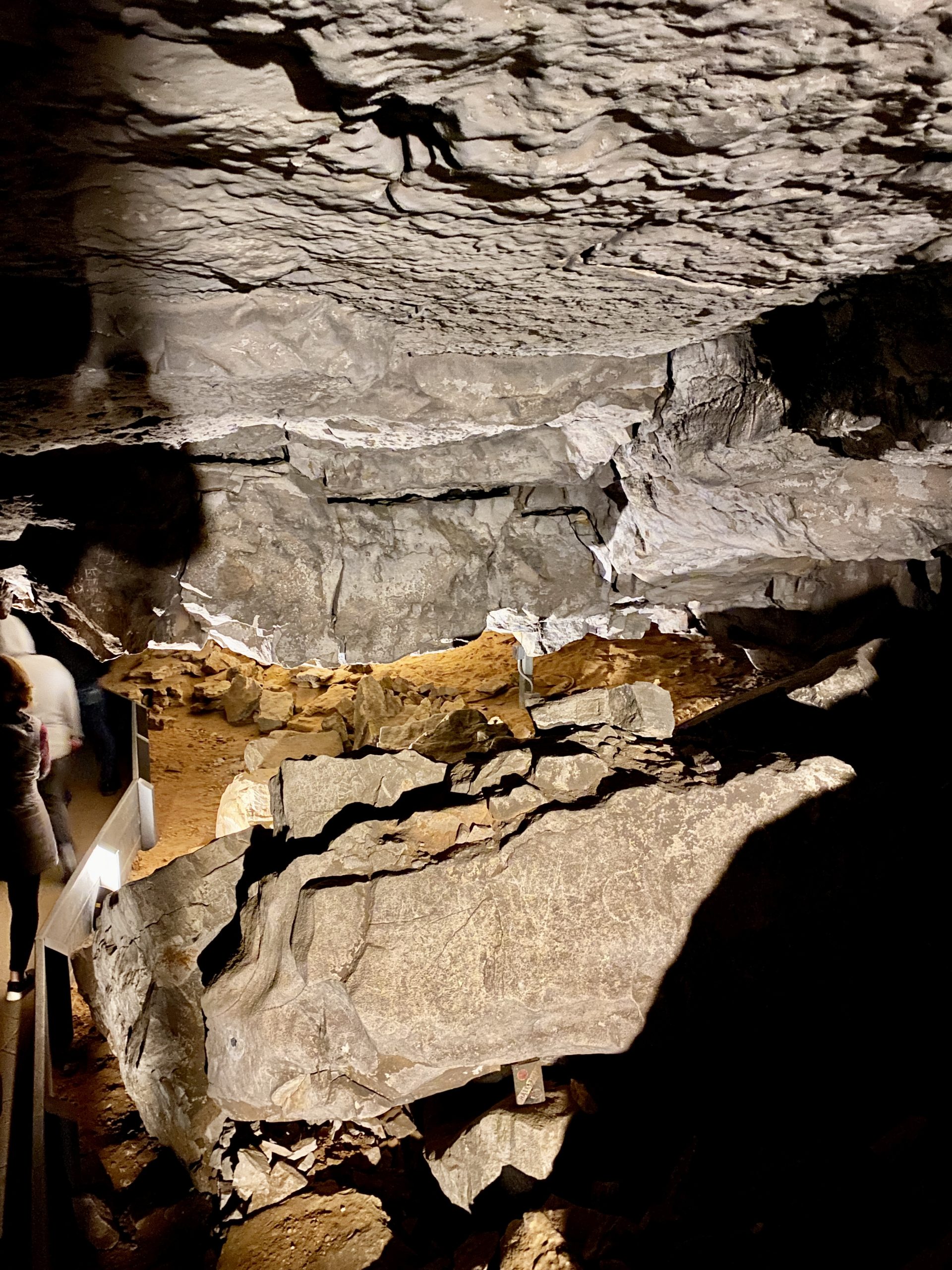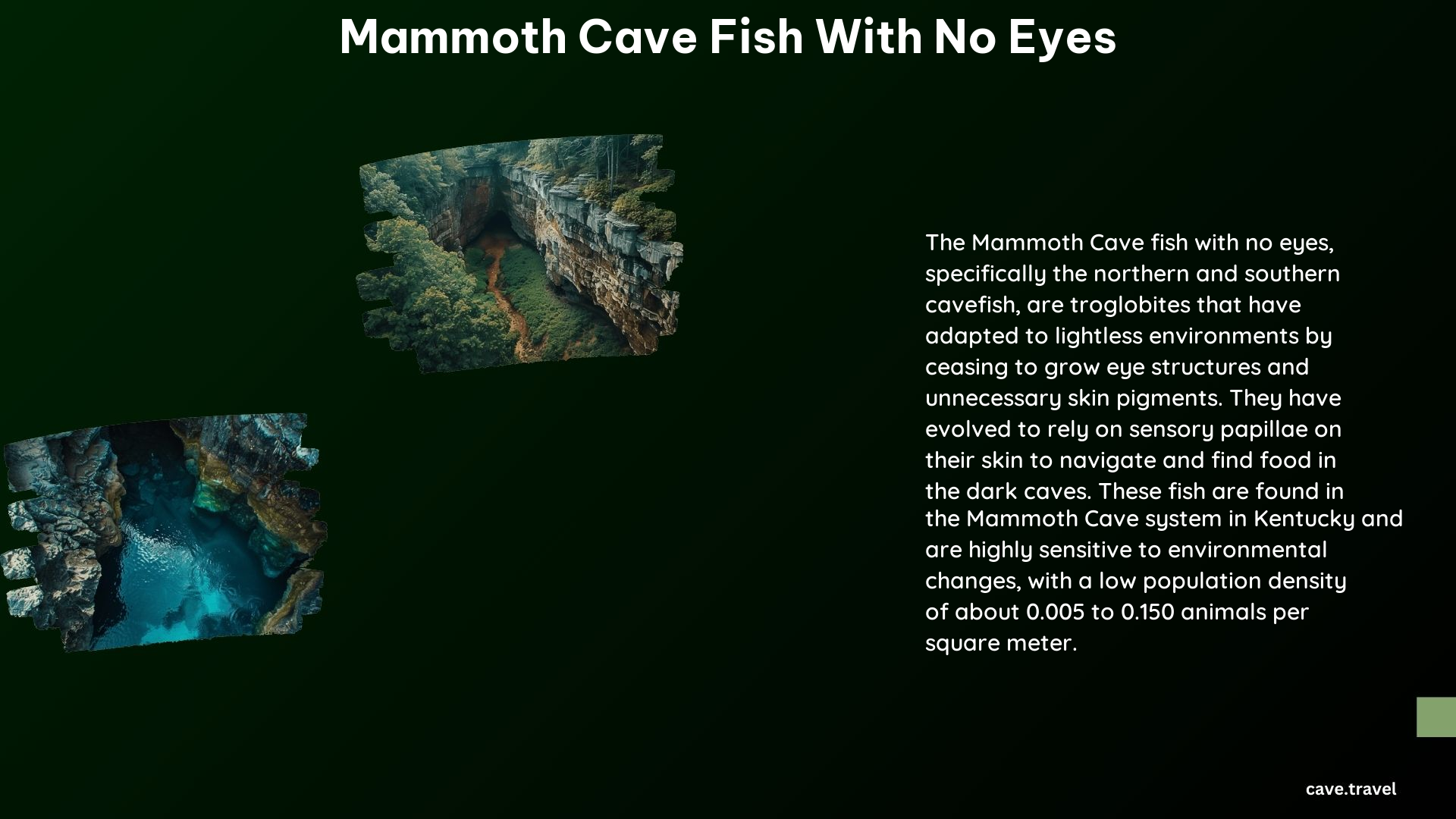The Mammoth Cave fish with no eyes, also known as eyeless fish or troglobites, are a unique species that have adapted to the lightless environments of the cave systems. These remarkable creatures have evolved to thrive in the dark, showcasing remarkable adaptations that allow them to survive and thrive in their subterranean habitats.
Adaptations to Lightless Environments

The Mammoth Cave fish with no eyes have undergone several adaptations to the lightless environments they inhabit. These adaptations include:
-
Eye Loss: These fish have ceased to grow eye structures and unnecessary skin pigments, as they are not required in the dark cave environments. This helps them conserve energy, which is crucial in the low-energy environments of the caves.
-
Enhanced Sensory Organs: To compensate for the lack of vision, the Mammoth Cave fish have developed chemoreceptors in their sensory organs and lateral line, allowing them to detect vibrations and changes in water currents.
-
Energy Conservation: The absence of eyes helps them conserve energy, which is crucial in the low-energy environments of the caves. Research suggests that the energy cost of sight is 15% greater than if they were blind.
Unique Characteristics

The Mammoth Cave fish with no eyes possess several unique characteristics that set them apart from other fish species:
-
Species: There are two species of rare cave-dwelling eyeless fish found in Mammoth Cave National Park: the southern and northern cave fish. They differ minutely in size and structure.
-
Body Structure: The Mammoth Cave fish have slender bodies adapted for swimming in fast-flowing waters, with a naked, moderately depressed head and an elongated body covered with small cycloid scales.
-
Feeding Habits: These fish are omnivorous and feed on whatever they can find, including scavenging dead animals and plants.
Habitat and Ecology
The Mammoth Cave fish with no eyes thrive in a very specific habitat:
-
Cave Habitats: They are found in caves with streams running into them, providing a stable environment with few competitors and predators.
-
Food Supply: The cave environment offers a poor food supply, leading to low population densities, estimated to be around 0.005 to 0.150 animals per square meter.
-
Vulnerability: Cave habitats are vulnerable to changes in the environment such as water pollution and exotic species, which can impact the fish populations.
Interesting Facts
The Mammoth Cave fish with no eyes have some fascinating facts associated with them:
-
Evolutionary History: The Amblyopsidae family, to which these fish belong, is ancient in origin and has undergone convergent evolution to adapt to the dark environments.
-
Brooding Behavior: The genus Amblyopsis is unique in brooding their eggs in the gill chambers, a behavior not seen in other fish families.
Visiting Mammoth Cave National Park
Visitors to Mammoth Cave National Park can explore the cave systems and learn more about the unique ecosystems and species that thrive there:
-
Park Information: Mammoth Cave National Park is home to a variety of species, including the eyeless fish, and offers guided tours and activities to explore the park’s natural wonders.
-
Cave Tours: Visitors can take guided tours to explore the cave systems and learn more about the unique ecosystems and species that thrive there.
The Mammoth Cave fish with no eyes are a fascinating example of the remarkable adaptations that can occur in response to the challenges of living in a lightless environment. By understanding these unique creatures, we can gain insights into the incredible diversity of life on our planet and the resilience of species in the face of extreme conditions.
